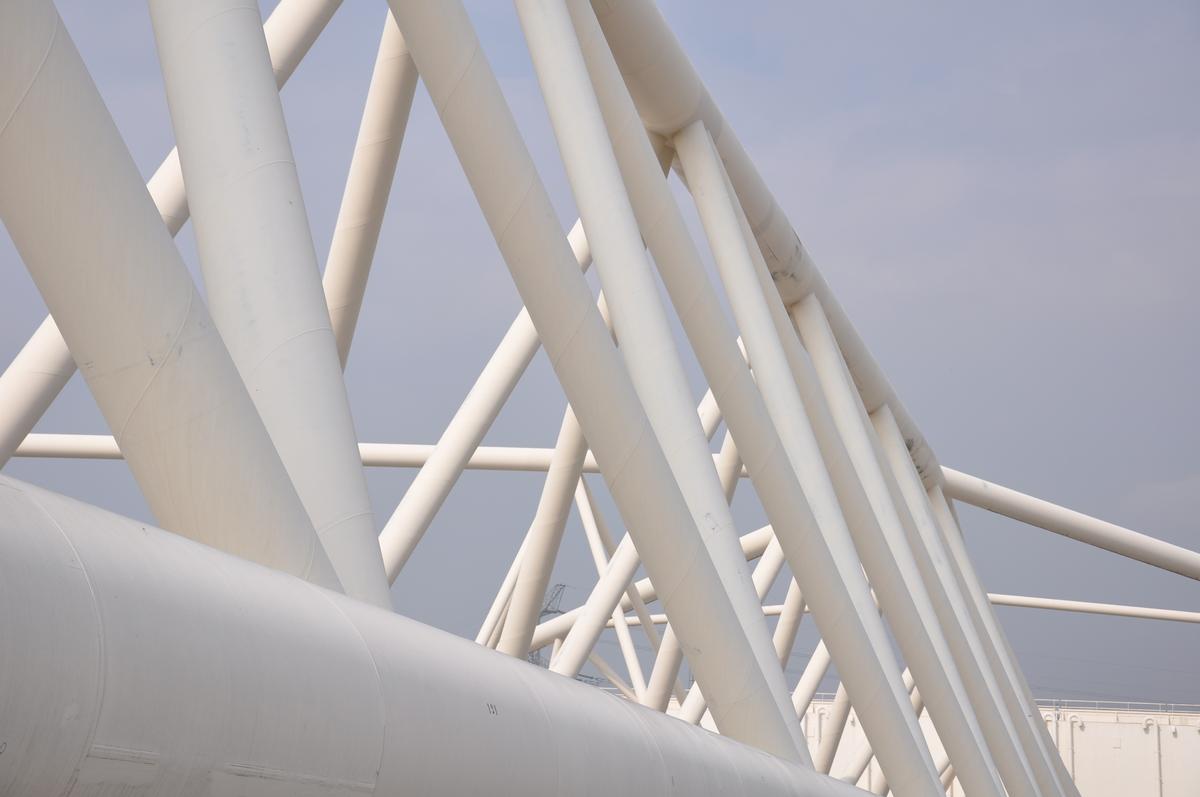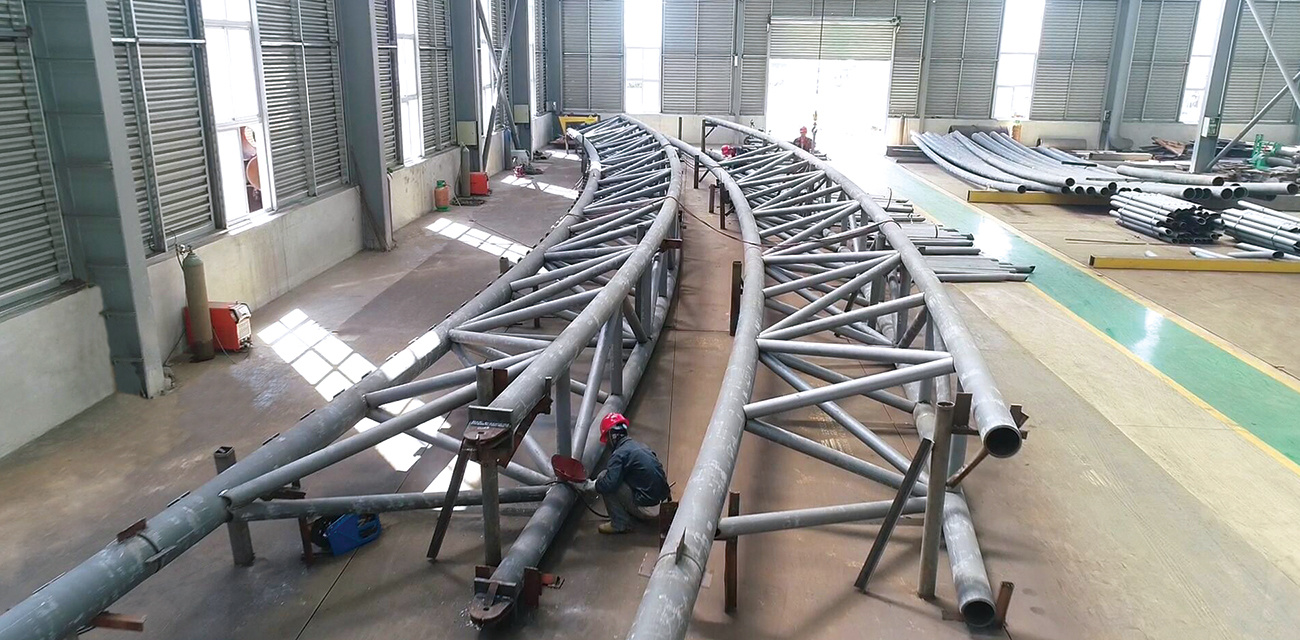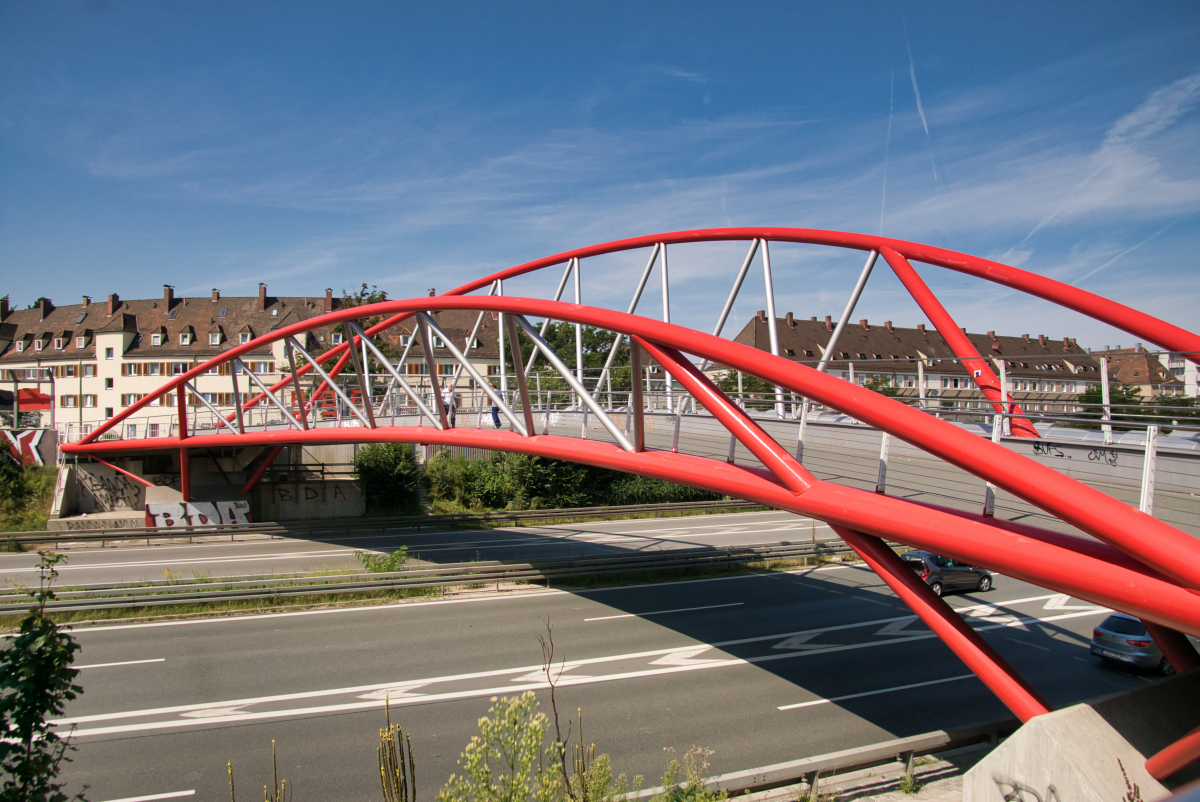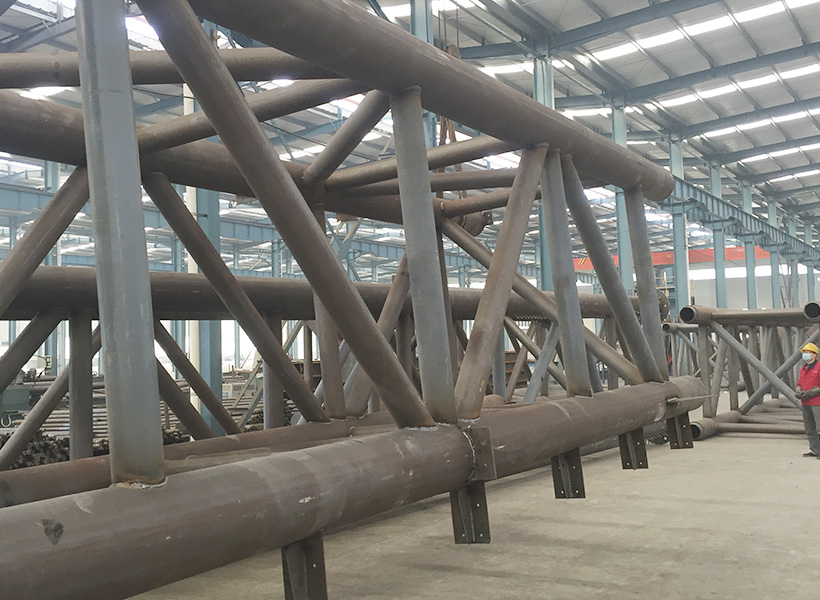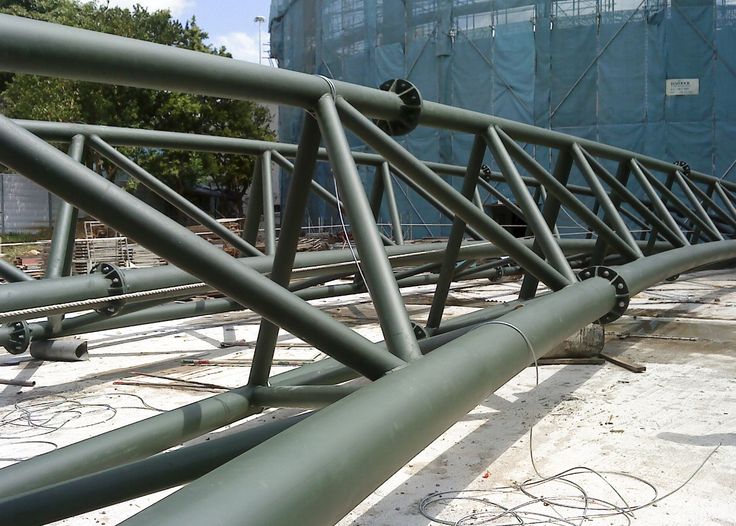Steel Pipe Truss System: Customized Engineering and Professional Production
Introduction
Steel pipe truss systems are integral to modern construction, providing robust and versatile frameworks for a wide range of applications. From architectural marvels to industrial structures, these systems offer strength, flexibility, and aesthetic appeal. Customized engineering and professional production are key to tailoring these systems to meet specific project requirements. In this exploration, we’ll delve into the intricacies of designing and producing customized steel pipe truss systems, highlighting the engineering principles, production processes, and benefits of professional customization.
1. Understanding Steel Pipe Truss Systems
1.1 Definition and Applications
- Steel Pipe Truss Systems: These are structural frameworks composed of interconnected steel pipes, forming a rigid and lightweight structure. They are used in various applications, including bridges, roofs, towers, and more.
- Applications: The versatility of pipe truss systems makes them suitable for a wide range of applications, from supporting large-span roofs in sports arenas to creating intricate architectural features in modern buildings.
1.2 Advantages
- Strength and Stability: Truss systems provide excellent strength-to-weight ratios, allowing them to support significant loads while minimizing material usage.
- Design Flexibility: The modular nature of truss systems allows for creative and complex designs, accommodating unique architectural visions.
- Cost-Effectiveness: By optimizing material usage and construction methods, truss systems can offer cost savings in both materials and labor.
2. Customized Engineering
2.1 Design Process
- Needs Assessment: The customization process begins with a thorough assessment of the project’s requirements, including load-bearing needs, environmental conditions, and aesthetic goals.
- Conceptual Design: Engineers develop conceptual designs that outline the basic structure and configuration of the truss system. This stage involves collaboration with architects and project stakeholders.
- Detailed Engineering: Using computer-aided design (CAD) software, engineers create detailed models of the truss system, specifying dimensions, materials, and connection details.
- Structural Analysis: Advanced software tools are used to perform structural analysis, ensuring that the design meets safety and performance criteria under various load conditions.
2.2 Material Selection
- Carbon Steel: Often chosen for its strength and affordability, carbon steel is suitable for most truss applications.
- Stainless Steel: Selected for environments where corrosion resistance is critical, such as coastal or industrial areas.
- High-Strength Alloys: Used in applications requiring enhanced mechanical properties, such as high-load or long-span structures.
3. Professional Customized Production
3.1 Fabrication Process
- Cutting and Shaping: Steel pipes are cut and shaped according to the design specifications using precision cutting tools and machinery.
- Welding and Assembly: Skilled welders assemble the pipes into the truss configuration, ensuring precise alignment and strong, reliable welds.
- Surface Treatment: The assembled truss may undergo surface treatments such as galvanization or painting to enhance corrosion resistance and aesthetic appeal.
3.2 Quality Control
- Inspection and Testing: Rigorous inspection and testing are conducted throughout the production process to ensure that the truss system meets all quality and safety standards.
- Non-Destructive Testing (NDT): Techniques such as ultrasonic testing or radiographic testing are used to detect internal defects without damaging the structure.
- Load Testing: In some cases, the completed truss system may undergo load testing to verify its performance under simulated conditions.
4. Benefits of Customized Engineering and Production
4.1 Tailored Solutions
- Project-Specific Designs: Customized engineering allows for solutions tailored to the unique requirements of each project, ensuring optimal performance and aesthetics.
- Integration with Existing Structures: Custom designs can be seamlessly integrated with existing structures, enhancing functionality and appearance.
4.2 Enhanced Performance
- Optimized Load Distribution: Customized designs ensure that loads are distributed efficiently across the truss system, enhancing stability and safety.
- Improved Durability: By selecting appropriate materials and finishes, customized truss systems can offer improved durability and longevity.
4.3 Cost Efficiency
- Material Optimization: Custom engineering allows for precise material usage, reducing waste and lowering costs.
- Reduced Construction Time: Professional production techniques streamline the fabrication process, reducing construction time and minimizing disruptions.
Conclusion
Customized engineering and professional production are essential for creating steel pipe truss systems that meet the specific needs of modern construction projects. By leveraging advanced design tools, skilled craftsmanship, and rigorous quality control, these systems offer unparalleled strength, flexibility, and aesthetic appeal. As technology and materials continue to evolve, the capabilities and applications of customized truss systems will expand, offering new possibilities in architecture and engineering. If you have any more questions or need further details, feel free to ask!

